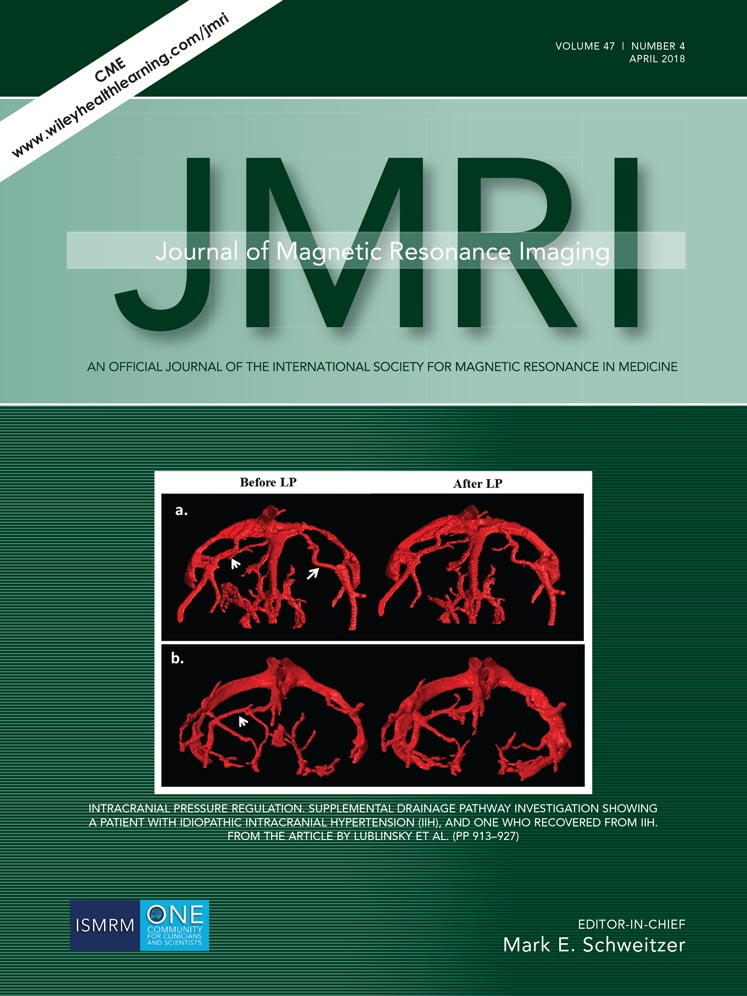Quantification of the salivary volume flow rate in the parotid duct using the time-spatial labeling inversion pulse (Time-SLIP) technique at MRI: A feasibility study
Abstract
Background
We developed a method to quantify the volume flow rate (VFR) using the time-spatial labeling inversion pulse (Time-SLIP) technique to evaluate salivary function.
Purpose/Hypothesis
To investigate the accuracy of quantification of the salivary VFR using the Time-SLIP technique in phantoms and to examine the feasibility of its use in human subjects.
Study Type
This was a prospective phantom and volunteer study.
Population/Subjects/Phantom/Specimen/Animal Model
A phantom and 23 normal volunteers who fasted at least 2 hours study was performed.
Field Strength/Sequence
Flow images of the phantom and the parotid duct of 23 volunteers were acquired on a 3T-MRI scanner using the Time-SLIP technique.
Assessment
Hypothesizing that flow aggregates in the conducting duct, we measured the VFR on flow images. In the phantom study, the actual VFR (slow, medium, fast flow) was controlled by an automatic pump system and the measured VFR was compared with the actual VFR on flow images. In the human study we injected citric acid into the mouth of healthy volunteers to stimulate saliva secretion and recorded the VFR.
Statistical Tests
As this study was a feasibility study, statistical tests were not performed.
Results
In the phantom study, the VFR at slow, medium, and fast flow was 5.7 ± 0.4 (SD), 8.4 ± 0.3, and 12.2 ± 1.1 mm3/sec, respectively. The error between the measured and actual VFR values was 2.8–3.7%. Salivary flow in the parotid duct was visualized in 22 of the 23 volunteers. The mean VFR was 8760 mm3/10 min.
Data Conclusion
When salivary flow was stimulated with citric acid in normal volunteers, the salivary VFR could be obtained using the Time-SLIP technique.
Level of Evidence: 2
Technical Efficacy: Stage 2
J. Magn. Reson. Imaging 2018;47:928–935.




